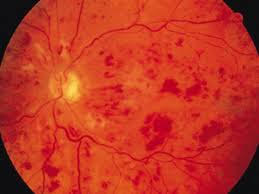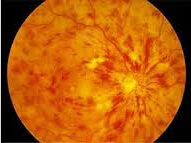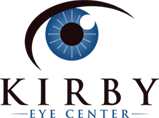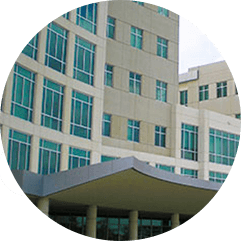What is a retinal vein occlusion?
The retina is the layer of tissue that lines the inside of your eye that senses light. It is nourished by blood vessels that enter your eye. When there is a blockage of the veins, a retinal vein occlusion (RVO) occurs. If the major vein is blocked, it is called a central retinal vein occlusion (CRVO). If it is one of the smaller branches of the central vein, it is called a branch retinal vein occlusion (BRVO). The blockage can cause part of the retina to be damaged. This damage can lead to vision loss.
What causes a RVO?
It is still unknown what causes an RVO in most cases. The most common risk factors are high blood pressure, high cholesterol, and increasing age. Atherosclerosis (hardening of the arteries), and diabetes have also been linked to RVOs.
What are the symptoms of a RVO?
The symptoms of an RVO are painless blurring of the vision. This can be part or all of your vision, and generally occurs in only one eye. The vision loss occurs suddenly or over a few hours.
What causes vision loss in a RVO?
Vision loss is usually caused by macular edema, or swelling of the central retina. This swelling of the retina occurs when the blood vessel is blocked and there is backup of blood and fluid, which leaks into the retina.
How is a RVO diagnosed?
If you have sudden, painless loss of vision, you should see your ophthalmologist immediately. There, they will do a complete eye exam, including a dilated eye exam, and special imaging and testing of the retina. You may also need to have blood-work done and/or a cardiac evaluation by your primary care provider.
How is a RVO treated?
There is no cure for an RVO. The main treatable side effect of an RVO is macular edema, or swelling of the retina. There are two main treatments for macular edema. The first line of treatment includes intra-vitreal injections of medication into the eye (which are done painlessly) but may also include laser to the retina. You and your ophthalmologist will discuss the best method of treatment for you. You should expect to see your ophthalmologist every 1-2 months for treatment.
What happens after treatment?
Patients’ responses to treatment are variable. A significant number of patients will return to near-normal vision. A certain portion of patients will have no improvement despite treatment. Most patients have some improvement in their vision. It usually takes 2-3 months to see an improvement.










